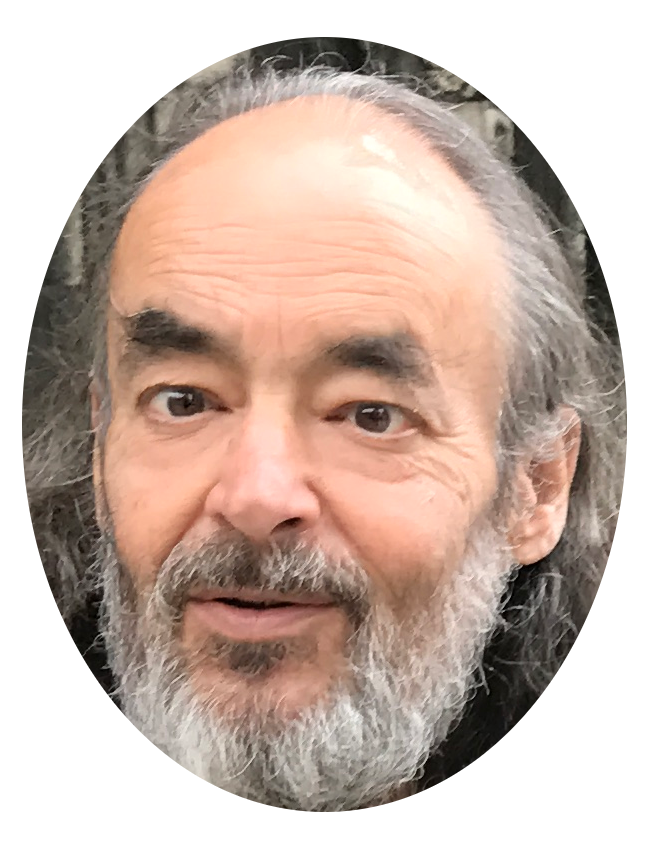Cochonfucius:
Collaging of thought,
to image, to word,
to Other Minds.
... Art leads us from the work
to the process of creation. This
reversion outside the theory of Art
will eventually generate
universal doubt about the world as given ...
Max Raphael
When the individual is faced with creation, he
realizes that he is free. He has the possible at his fingertips: innumerable
arrangements, images, styles, surfaces, etc. And yet he is limited by the
parameters of his culture, his imagination, his physiology and his means.
Nevertheless, the possible's real limitation is meaning.
Meaning is interesting in that it can be separated
from its manifestations. Meaning appears as something differentiated but universal,
concepts, mental entities, etc. This makes for there being a random yet
conventionalized connection between the signification and its support. Alphabetic
languages, symbolic systems tend to be abstract because the elements of the system
function as combinatory tools. Picturing systems work, on the other hand, gain
their precision, by the degree to which they correspond to real things in the world.
Visual art has tended to be organised through the perspective of the latter,
co-ordinating shapes.
There has, however, been a mixing of the two
perspectives since the invention of written languages. This mixing of the two types
of specificity: the labelling, explaining of images, is a constant characteristic
from Egyptian times. A modern variant to it is the "collage-montage" technique,
alighted upon by Braque then Picasso.
The French scholar-artist known as Cochonfucius, who functions both within the Chinese poetic
tradition and the Occidental anarchist-Dadaist line, does battle with word and
image simultaneously; making sense and reference into aleatoric dice. Like
Avalokitesvara with numerous mental hands he presents, and juggles scales of
meanings and images. His lateral, multi-levelled approach forces one to confront
the human mind, and its cognitive potential. Concept-auxiliary, invisible-visible,
thought-picture, etc, these primary units mark out the dimensions of his format.
What differentiates him from other artists is, possibly, his seeming determination
to turn the visual into the synonym of the conceptual. Nevertheless there is always
the element of play which enters his work as an instrumental ingredient in the
creation of his dough. It is play that opens the sensibility to the implicit joys
of care and being. As well, it expands the process of creation and brings it to our
attention.
The strange parallelism between word and picture which
he sets up subverts, "buggers up" the illustrative relationships alphabetic and
other languages have with the pictorial in advertising. Pertinent examples of this
can be found in montages like
As-tu tous les albums de Cochonfucius.
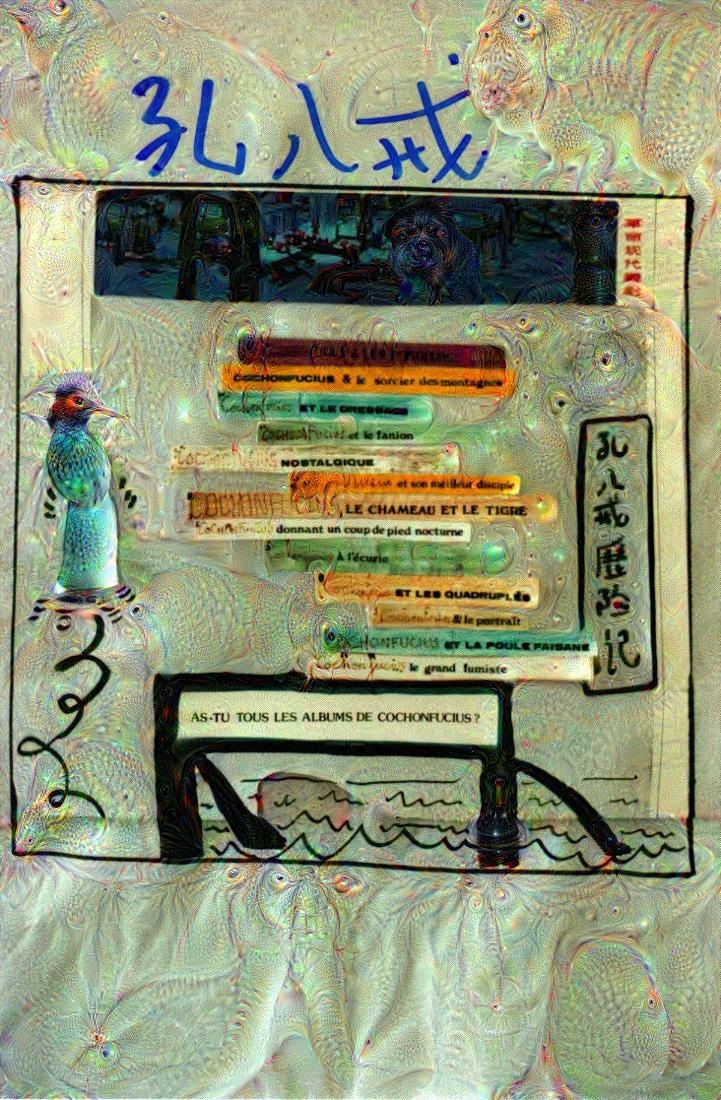
He radically synthesizes very disparate things as in
Une Fantastique Métropole
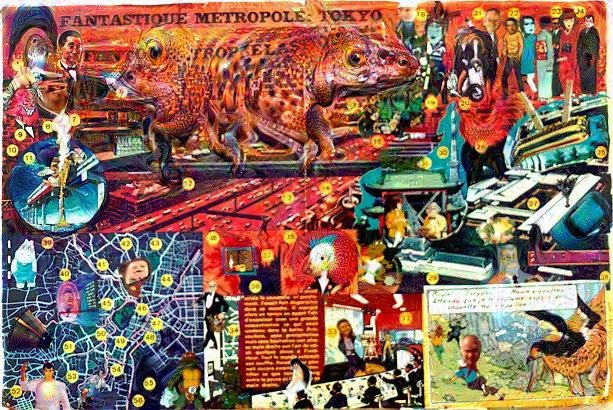
and
Our body is a tree
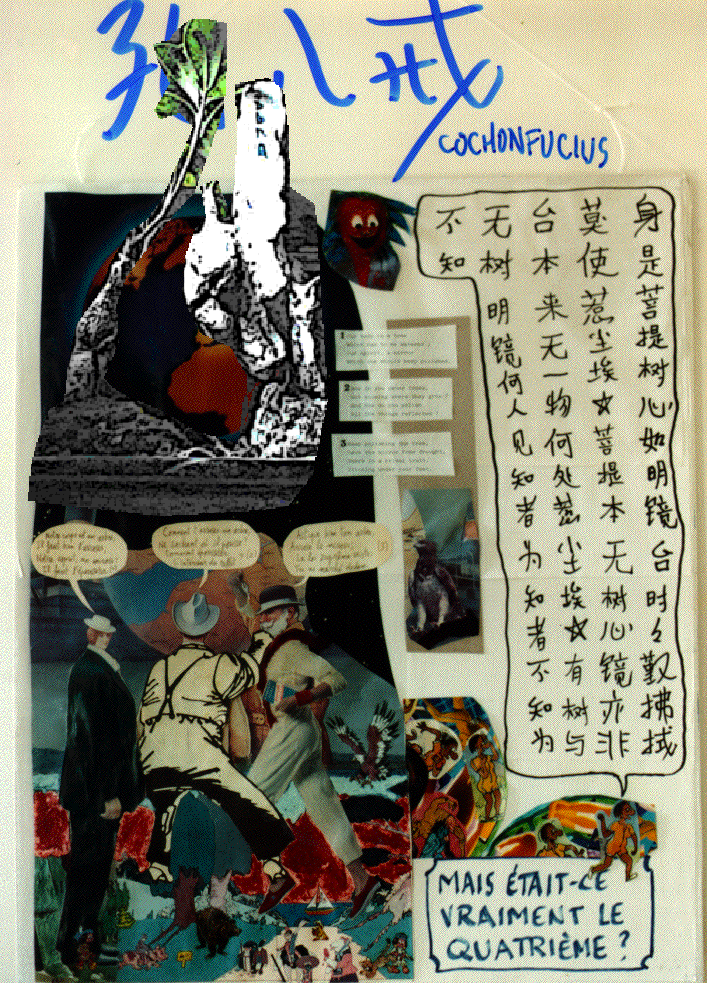
in which he uses three languages: French, English and Chinese, plus an assortment
of images from comic books to telescopic photographs, centering around the failed
Chan insight: poem for the sixth patriarchship of the sect.
The fusion, the juxtaposition of type,
textures,
colours and meanings in
Total performance! Body and soul
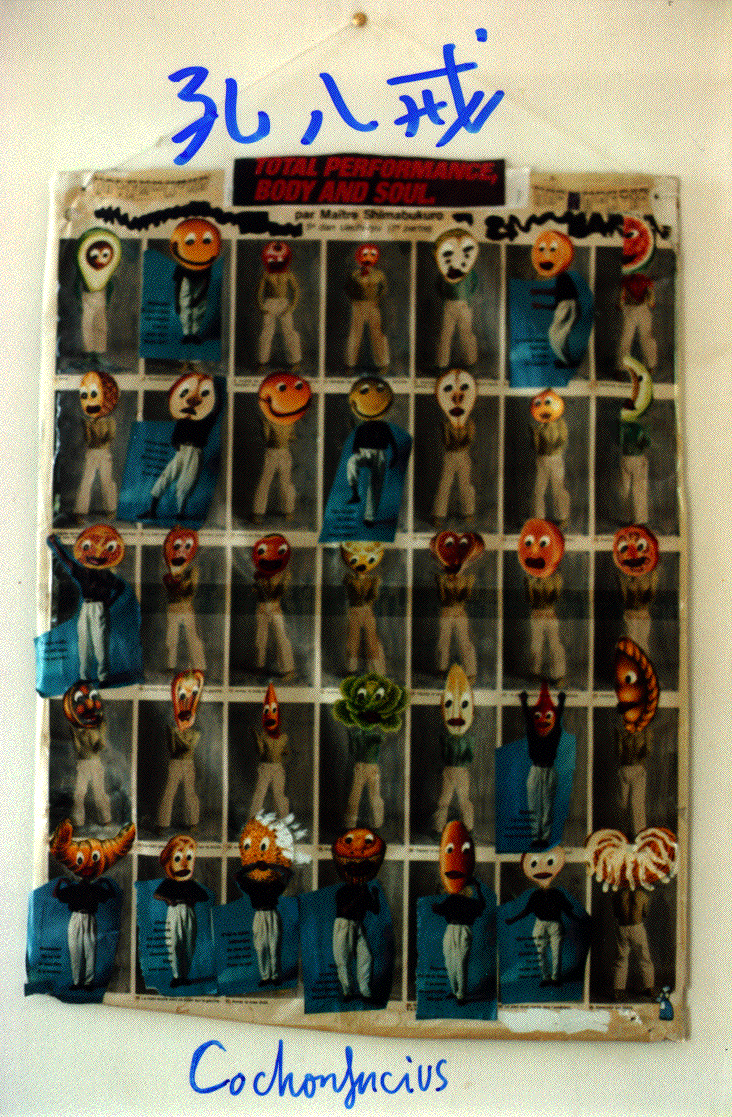
seizes the links, analogies, between the articulation of the body and the
alphabetic language, between fruits, cakes, etc, and the head and its expressive
potential. The parody of the martial arts implicit in this collage is submerged
under a deeper statement concerning the spirit and the flesh. Not in a religious
sense, but at the experiential level of "being": of action and thought. In a way
this work sums up the artist's commitment to his mind, his interests and his body.
The mind continually transforms what it is presented with, according to the logic,
feeling or mood of the moment. Man is alive, caught in, with the flux. To hold on
to anything is to fail to understand man's situation. As the
Zen
masters taught
their swordsmen, to hold any thought in one's mind in battle, rather than going
with the flow of events, is to welcome death.
Another work not exhibited, Le corps est
graphique,
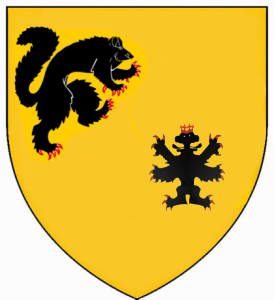
brings other dimensions to the fore: those of language forming the
body, of the body as a diagram, and the body as something drawn, sketched by
thought. In a bizarre way these meditations of the artist: corporeal fragmentation
turned into signs, follow on into his
Pictagores

which within certain notions of set logic push towards a "private language". The
family of resemblances pile up, making new constellations, that we seem to lose the
key to.
Formally he vacillates between the found image and the
highly structured work one expects from an Oulipo writer. (an example is his
314 poèmes en hommage à Raymond Queneau.) One may
detect a pataphysical orientation in his position and humour, if this is so, it
is derived from Boris Vian rather than Jarry. For Cochonfucius humour is a positive force, the main catalyst of
transformation, and motivating force behind his art, it seems to me. Jean Paulhan's
thoughts concerning early modernist painting could be one of
the springboards along with the caricaturists of the twentieth and nineteenth
centuries. Maybe his lampooning spirit has been influenced by English humour
and wit, as well.
The reverse facet of this, is a gnawing anguish which I
think can be detected in
If she dares to dream
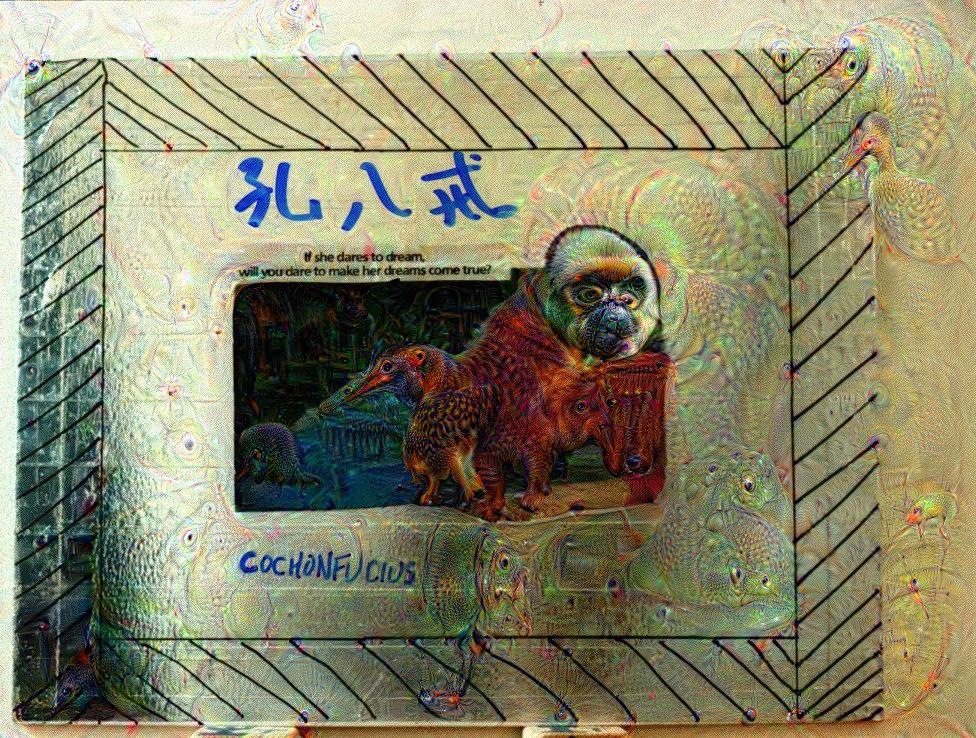
and
Ciel ! un éléphant rose dans ma tasse de
café !.
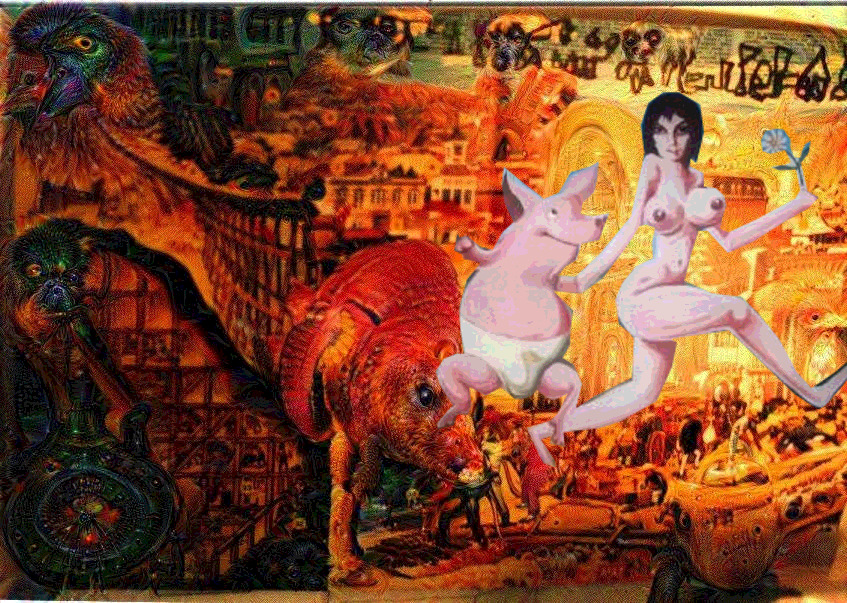
Pain and suffering are the foundations of living. Work, alcoholism, disillusion,
catastrophes, illness etc weave the fabric, the sub-text behind these works. The human hand in making marks and gestures cannot mask the sadness of
the body it is joined to.
The collage technique which he utilises owes something to
Dadaist and Surrealist collage procedures: word placement and use to the former,
and image combination to the latter. Perhaps a better word to describe what he does
would be "assemblage", to amass constructively. This is manifested in his
construction
Le monstre télépathe.
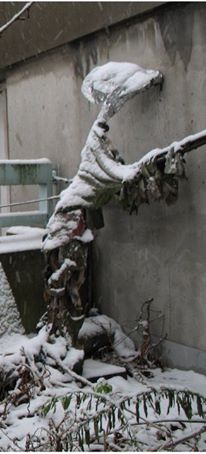
The logic of the boot, what this item can connotate, is the theme of the
assemblage. Ultimately this is the key to the show. To present to us what we have
not thought of because we are not him, and have not been presented with in the
world. In his ambiance, he has installed
the exhibition, we can savour his voice,
participate in the workings of his mind.

